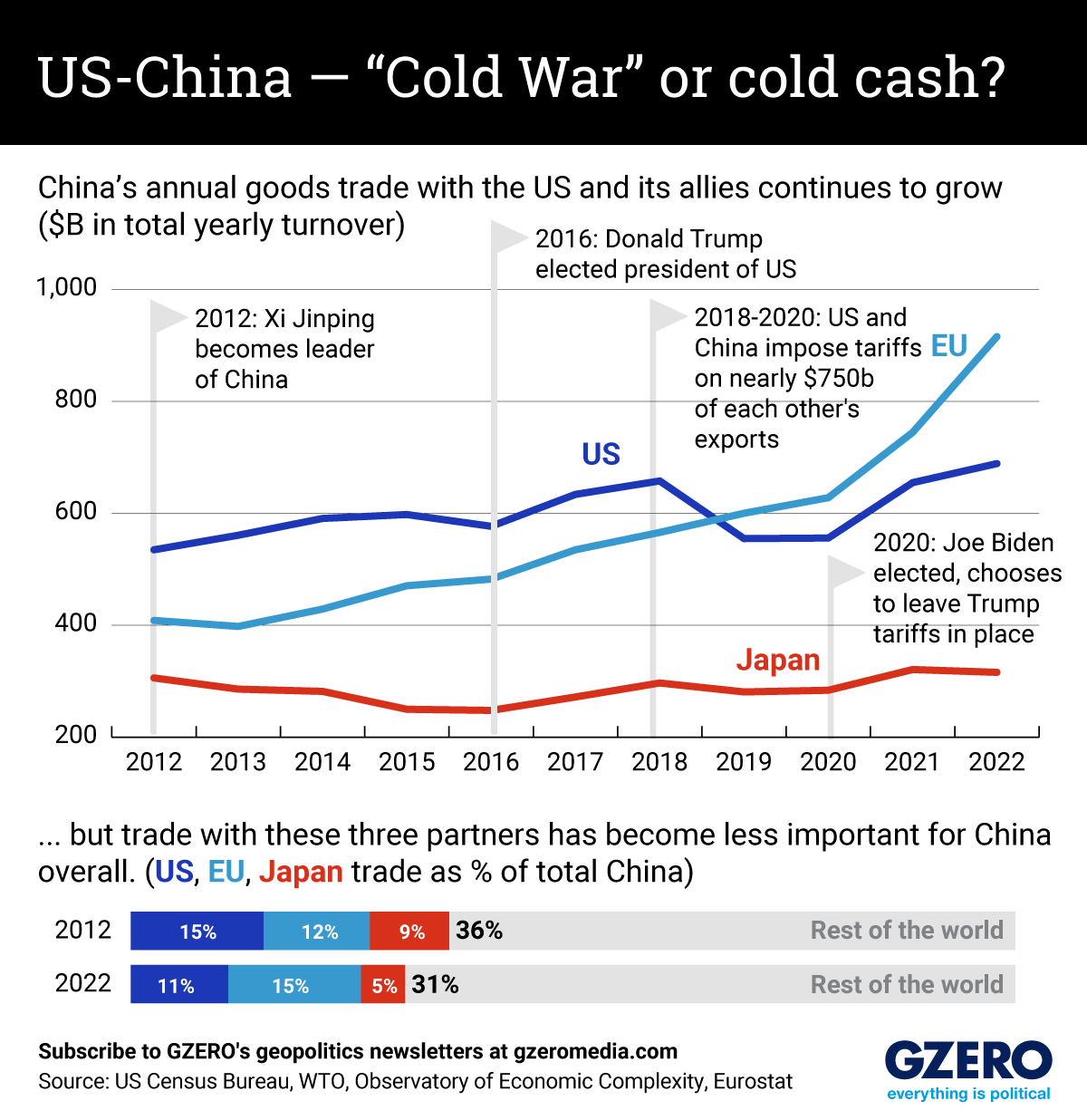June 02, 2023
Whether the US and China are in fact slouching towards a new “Cold War” or not, one thing is certain: commerce between them is still hotter than ever.
In the 10 years since Xi Jinping took power as China’s leader, trade volumes between the world’s top two economies have continued to grow. The same is true of Chinese trade with key US allies like the EU and, to a lesser extent, Japan.
In fact, US-China trade has continued to rise despite the Great US-China Trade War of 2018-2020, when the Trump administration and Beijing slapped tariffs on some $730 billion of each other’s goods. In 2022, US-China trade reached a dizzying record high of $689 billion. For comparison with the actual Cold War — US-Soviet trade throughout the entire 1980s amounted to less than $50 billion.
That said, while overall trade continues to rise between China on one side and the US and its allies on the other, this trade is steadily becoming less important as a part of China’s overall global commerce. That is, China is relying ever more on trade with the rest of the world, and less on Uncle Sam and friends.
To show what that looks like, we track China’s trade with the US, EU, and Japan, and look at how that has figured into China’s total trade between 2012 and now.
A Cold War may come one day, but for now, cold cash is still king.
From Your Site Articles
More For You
Miami Mayor-elect Eileen Higgins points as she thanks her staff and supporters on the night of the general election, on Tuesday, Nov. 4, 2025.
Carl Juste/Miami Herald/TNS/ABACAPRESS.COM
A Democrat won Miami’s mayoral race for the first time in nearly 30 years. The Republican defeat will ring some alarms for the party – and their support among Latino voters.
Most Popular
Walmart’s $350 billion commitment to American manufacturing means two-thirds of the products we buy come straight from our backyard to yours. From New Jersey hot sauce to grills made in Tennessee, Walmart is stocking the shelves with products rooted in local communities. The impact? Over 750,000 American jobs - putting more people to work and keeping communities strong. Learn more here.
© 2025 GZERO Media. All Rights Reserved | A Eurasia Group media company.
